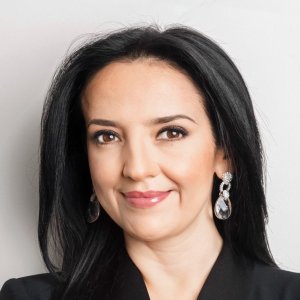COVID-19 Impact Calls for Regulation on Technology

COVID-19 Impact Calls for Regulation on Technology

STORY INLINE POST
Q: How do Grupo Altavista’s technological solutions for healthcare boost your client’s practices and service offering?
ES: Our solutions are based on client needs and finding innovative ways to support them. Our consulting team works directly with hospitals and with medical staff, adapting a solution based on their context and budgets.
VO: For Grupo Altavista, medical practices need to be precise to boost effectivity and efficiency, while remaining sustainable. This realization has led us to evolve our methodology and approach to deliver personalized, planned and precise healthcare that promotes prevention. Traditionally, technological solutions are focused on the needs of institutions, paying little or no attention to the staff and the patient. Meanwhile, Grupo Altavista offers solutions oriented to the patient and their context and to medical professionals who are delivering healthcare solutions.
Moreover, we have focused on creating multisectoral solutions that will take care of medical services but also help educate patients about their own health.
Q: How does GA integrate innovative technology and solutions?
ES: We are integrating next-generation technologies in our services, focusing on those that can impact the current context and the needs of our clients. For us, technologies such as 5G are a big accelerator for healthcare tools. Aside from this, blockchain, AI and virtual reality are among the advances that we are also incorporating to our solutions as they provide high speed for data transmission and analysis as well as transparency on the use of information in the case of blockchain. The use of these technologies will not only transform our solutions but will help in creating a more personalized approach and certainty of diagnosis. Right now, we are looking for providers of these kinds of technological tools. We are rushing this due to the COVID-19 outbreak, but we hope we can create strategies with long-term staying power.
VO: The benefits that technology provides for patients and medical facilities can even translate to expenditures, as it enables a clearer plan and optimized logistics.
Q: What are the strengths and differentiators of your Electronic Clinical Record (ECR)?
VO: ECRs need to promote healthcare. Ours is based on templates that use tools such as Snomed, HL7 and Dicom that enable us to analyze data that is generated much more efficiently than with text. This allows us to identify data, such as possible ailments or conditions. Moreover, it provides the medical professional all the information and elements required for a more precise diagnosis.
We have also taken care of imaging analysis. When AI analyzes an image, it generates a code that allows it to be compared with a previous or future image from the same patient to detect the evolution of the condition. For diagnostics, this is a watershed.
Q: What is the role of telemedicine and how is it changing healthcare practices?
VO: Telehealth has increased access to health and improved medical attention and services. Telehealth includes telemedicine and tele-education. Telemedicine involves things like diagnostics, consults and management. On the subject, Grupo Altavista has designed processes and methodologies that will enrich those platforms, as having a protocol for those procedures will ensure a correct functioning and an added value for these services. Innovation goes beyond technology, it also involves a process that will enable technologies to work and have the desired outcome.
Q: How will COVID-19 boost the use of technology in healthcare?
VO: This is a watershed for digitalization. While many people were still resistant to adopting digitalization, due to the disruption of common practices, from the most complex tasks to simple face-to-face meetings, digitalization has become the new norm. This causes people to be open to digital tools and has generated a new need for technology, innovation and state-of-the-art solutions, which is something we offer and are improving with our 5G, AI, blockchain, virtual reality and IoT.
This new reality calls for the authorities to optimize regulations, such as NOM-004, which speaks about ECR, and also the implementation and validation of NOM-024, which establishes the mechanisms for information exchange.
Q: What is the role of public-private partnerships to achieve digitalization in the national healthcare system?
VO: The Mexican healthcare system fears these partnerships but today, as a result of COVID-19, it has been demonstrated that the future of healthcare in Mexico needs support from the private sector.
I think that three steps need to be taken to achieve this. The first is collaboration. The current steps that the government is taking to improve healthcare, such as INSABI, are good but very ambitious. When the government realizes that the burden cannot be tackled alone, it will start looking to the private sector. The second is transition, as universal healthcare will require many more supplies and much more capital. The last step is consolidation, meaning the acceptance of society that the private sector is an ally in providing healthcare.
Right now, the challenge of these partnerships will focus on employment. The private sector needs to understand that their employee’s health is also their responsibility. The government must modify the law to provide fiscal benefits to companies that are effectively taking care of this part.
Grupo Altavista is a leading Mexican business group that provides technology-driven solutions. In the health sector, the group offers advanced turnkey ICT solutions, leasing services, hospital and clinical equipment, among other services








 By Miriam Bello | Senior Journalist and Industry Analyst -
Fri, 06/19/2020 - 08:48
By Miriam Bello | Senior Journalist and Industry Analyst -
Fri, 06/19/2020 - 08:48
















